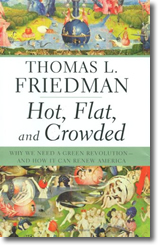Books on the Deepwater Horizon Disaster
Wednesday, April 20th, 2011
Today (April 20) is the one year anniversary of the BP oil spill in the Gulf of Mexico, the worst oil disaster in American waters in history. The catastrophe began with a series of explosions on the drilling rig, Deepwater Horizon, which killed 11 crew members and caused an massive eruption on the wellhead on the ocean floor. The oil gushed for 10 weeks, releasing 20 times more oil than the Exxon Valdez, killing wildlife and ruining the livelihoods of thousands of people who make their living in and around the Gulf.
The two books below provide clear accounts of the disaster, detailing what actually happened and why. BP is one of the largest and most profitable oil companies in the world and promotes its green efforts. Yet corporate policies for cost cutting and for rushing to pump oil led to shortchanged safety features that protect both drilling employees and the environment. Routine maintenance was shoddy and safety improvements were postponed. Federal regulators also share in the blame for not noticing.
BP has paid billions of dollars to victims, yet management has admitted nothing that would lead to a reform of corporate culture. This disaster is ripe for repeat.
Steffy, Loren C. Drowning in oil : BP and the reckless pursuit of profit. McGraw-Hill, 2011.
Business journalist from the Houston Chronicle provides a clear, thorough and readable account of the disaster, analyzing its roots and implications.
Freudenburg, William R. Blowout in the Gulf : the BP oil spill disaster and the future of energy in America. MIT Press, 2011.
Two environmental scholars provide insights into BP, industrial risk-taking, and the histories of oil exploration and US energy policy.
© Reviewer: Meg Trauner & Ford Library – Fuqua School of Business.
All rights reserved.



